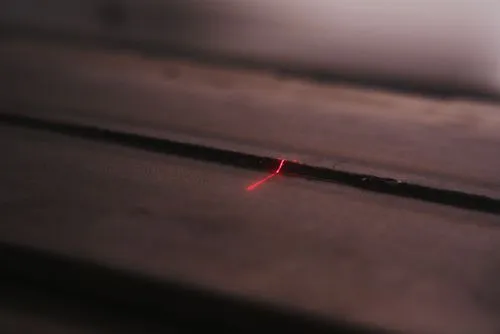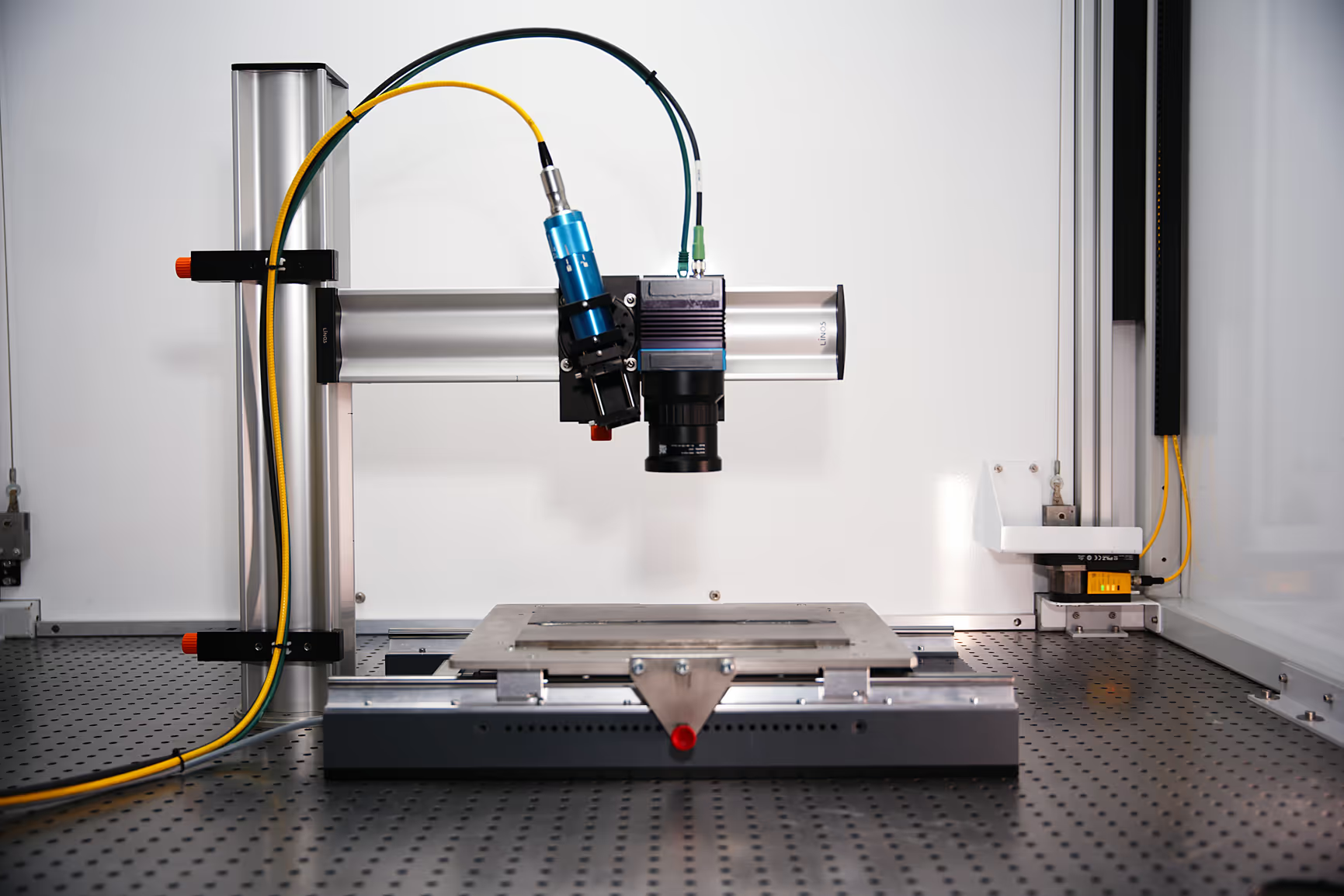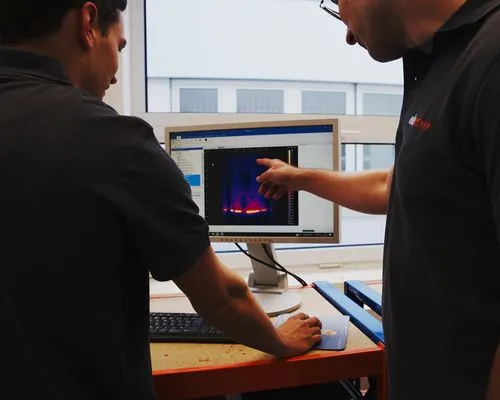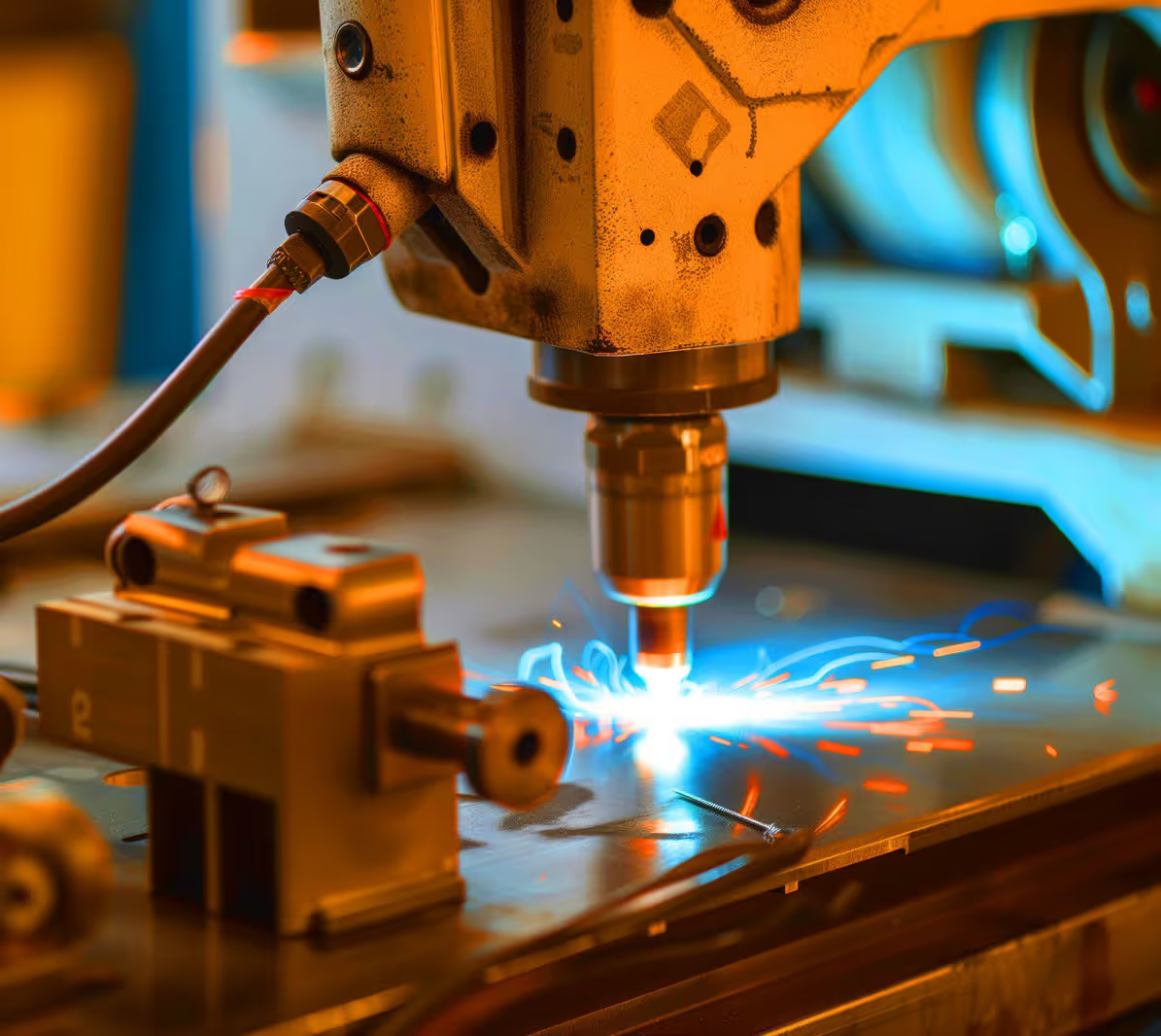Weld and solder seam testing
Contactless, precise and fully automated.
With our active thermography, you can reliably identify defects in welded and soldered connections — non-destructive and inline capable.

How it works — explained in a nutshell
During the inspection of welded and soldered joints, the seam area is selectively thermally excited – for example, by laser or induction. Defects such as cracks, inclusions, or incomplete fusion disrupt the heat flow within the material. These thermal anomalies are detected by an infrared camera and analyzed via software – non-destructively, objectively, and in real time.
What is inspected?
Our thermography systems reliably detect:
- Cracks & microcracks in weld seams
- Pores, voids, inclusions
- Lack of fusion & bonding defects
- Defects in solder joints
- Incomplete weld penetration
- Seam position / alignment
Typical joint types:
- Laser welds
- Resistance spot welds
- MIG/MAG welds
- Brazed joints
- Hybrid joints (e.g., CFRP–metal)
Application areas:
- Body-in-white / car body construction
- Battery housings
- Structural frames
- Axle components
- Heat exchangers
- Piping systems
Thermographic solution
Active thermography offers an efficient alternative to conventional inspection methods.
By applying targeted thermal excitation to the test area and analyzing the heat distribution, defects can be quickly and reliably identified.
A thermal pulse – generated using laser or induction thermography – is applied to the weld or solder joint.
Defects disrupt the heat flow, leading to local temperature variations that are captured by an infrared camera and analyzed via software.




Precisely inspect weld seams
FAQ
Our frequently asked questions — answered quickly and easily.
How does thermographic inspection work?
It detects temperature differences that may indicate internal defects.
find out moreWhat advantages does thermography offer?
It allows fast, contactless and non-destructive inspection.
find out moreWhat are typical defects in weld seams?
Typical defects are cracks, pores, bonding defects and insufficient penetration.
find out moreWhich inspection methods are used?
Methods include visual inspection, ultrasonic testing, X-ray inspection and thermography.
find out moreWhy is the testing of welded and soldered joints important?
It ensures the integrity and safety of the connections.
find out more


